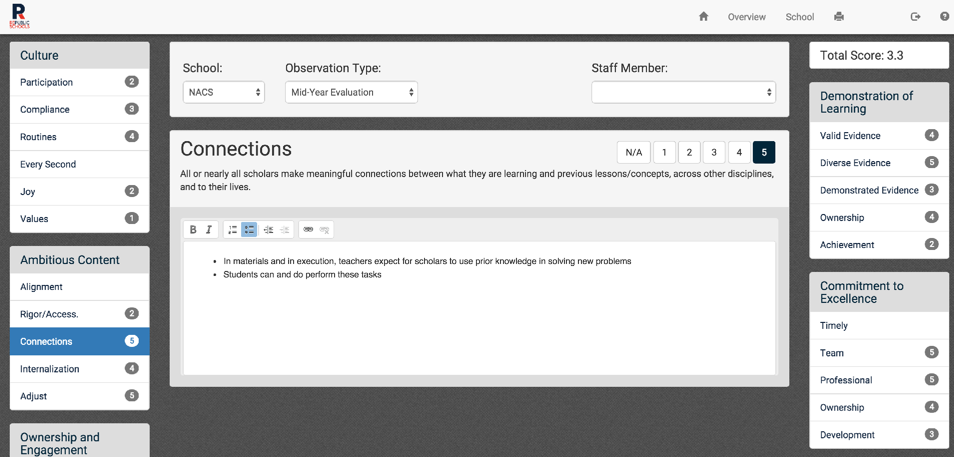This summer, I spoke to leaders at six public charter school networks who are now wily veterans in the art of blending teacher-led instruction with online learning--also known as “blended learning”. Their titles range from Innovation Manager to Director of Individualized Learning, meaning they work directly with teachers to effectively incorporate edtech in the classroom. The school networks include: Summit Public Schools (CA/WA), KIPP Bay Area Schools (CA), IDEA Public Schools (TX), FirstLine Schools (LA), RePublic Schools (TN/MS) and DC Prep (Washington DC).
I asked them one question: What has you jumping out of bed and rushing to work, in regards to blended learning?
In short: finding out what learning software is working for students; making edtech tools usable for teachers; putting better data in the hands of teachers and students; and--now that they know enough to be dangerous--designing 2.0 versions of their school models.
After five years, there is a growing maturity reflected in the blended learning work as these leaders become less preoccupied with connectivity, student logins and basic troubleshooting and are focusing more on what works for students and teachers.
1. Finding Out What Learning Software Works
Online learning products report on student progress, and some vendors commission research to prove their products’ effectiveness, but the leaders I spoke to were working hard to validate that 1) students are actually learning from specific edtech products; and 2) any online gains show up in the school’s other assessments.
KIPP Bay Area runs correlations between its students’ ST Math data and their scores on the NWEA MAP test to gauge ST Math’s impact on learning. Internal analysis shows that their top quartile 5th grade students benefited most when moving through content faster than the recommended pace, while students scoring in the bottom quartile on MAP responded positively to more frequent, positive feedback from ST Math.
The ways in which teachers proactively helped students with pace-setting and grade-level placement made meaningful differences in student achievement. “We originally focused on fidelity of use (e.g., use the program for 60 minutes a week) but, now that we know more, we have changed the conversation with teachers to be about excellent use,” say Jennie Dougherty, KIPP Bay Area’s irrepressible Innovation Manager.
DC Prep ran a similar correlation analysis with ST Math, NWEA MAP and in-house assessments. They discovered that similarly-performing students performed better on their in-house assessments after they had completed the relevant content in ST Math. “It is really good to have validation from someone other than ST Math--that it’s not just students playing games, but that these programs are really fostering student achievement and growth,” notes DC Prep’s Director of Academic Technology, Dan Englender.
Harvard researcher Thomas Kane, is now organizing a broader network of schools, both district and charter, to compare students’ use of edtech products against independent assessment data, using a similar approach as KIPP Bay Area and DC Prep. “Our goal is to make it easy for school leaders to evaluate the impact of their own initiatives, using their own data, and spot implementation bottlenecks while they still have time to fix them,” says Dr. Kane. Interested schools can sign up for the Harvard / Schoolzilla project here.
Students at Summit Public Schools work through digital playlists to prepare themselves for online assessments on discrete content standards. By now, students have made hundreds of thousands assessment attempts in the Personalized Learning Program. Summit is partnering with research institute SRI International to analyze this data and figure out what student behaviors and/or content resources contribute most to student learning.
The shift from implementing edtech with fidelity to implementing effectively is helping schools focus on teachers needs in the classroom.
2. Bridging the Gap Between Teachers and Edtech
If “sufficiently advanced technology is indistinguishable from magic,” we still need a big dose of Harry Potter when it comes to edtech in classrooms. Even small difficulties in classroom implementation can render the best tools useless for teachers.
Jennie Dougherty says, “I love making tools that bridge the difference between what teachers need and what edtech products offer.” For example, KIPP Bay Area’s Innovation Team created a tool that automatically generates Khan Academy playlists based on each student’s individual MAP scores. No need for teachers to stay up late curating playlists. Their students immediately have a personalized set of intervention resources.
Nashville-based RePublic Schools is taking the relationship of teachers and technology to a whole other level. Ryan York, RePublic’s Chief Information Officer, ran voluntary coding classes for 20 teachers, where they built web apps for their school. One tool groups students in math intervention groups based on their needs while the other (pictured below) streamlines teacher observation and feedback.

3. Creating Better Ways to Look at Data
Nearly all the groups were working on ways to help teachers and students visualize data better.
IDEA Public Schools is launching its new “Actionable Dashboard” that provides a holistic view of students from a wide variety of sources. The first dashboard is designed to help teachers make more effective instructional decisions while future versions will help students make better decisions about their learning.
FirstLine teachers at Phillis Wheatley Community School are helping students see their own progress in new ways. Instead of hanging a chart or a data table on the wall, 2nd grade teachers Shannon Lindsay and Liza Kostreva created a garden that blooms as their students make progress with online assessments.
In all cases, teachers and students are looking for ways to make academic data more actionable and impactful.
4. Redesigning the Learning Environment
After several years of blended learning implementation, some schools are now engaging in a second or third major push around school design, in order to create deeper personalization and richer, more holistic experiences.
IDEA Public Schools began with a Rocketship-type learning lab approach in its elementary schools. The school network is now launching a high school model called Catalyst. Catalyst helps individualize learning for high school students through a combination of small-group instruction, project-based learning, adaptive software and distance learning.
Summit Public Schools’ renowned personalized learning model originally focused on content mastery and growth in higher-order, thinking skills (e.g., using evidence and asking questions). Summit is now piloting badges for concrete learning strategies, such as note-taking or meta-cognition skills, that help students become more self-directed learners. And they are also badging project expeditions (e.g., coding, organic gardening, etc.) that reflect students passions and motivations. The goal is to create an even richer learning environment where students grow across multiple dimensions and are prepared to drive their own learning after high school.
Progress
These schools are moving out of the “getting-the-technology-to-work” phase and beginning to think deeply about the best ways to support student achievement. They are running their own internal evaluations of edtech effectiveness, training teachers on emerging best practices, exploring better ways to put data in the hands of teachers and students, and consolidating all their learnings to iterate on existing school designs or create new ones.
While the initial exuberance around blended learning subsides, these organizations are quietly and persistently pushing our understanding of how we might individualize learning for students going forward.


